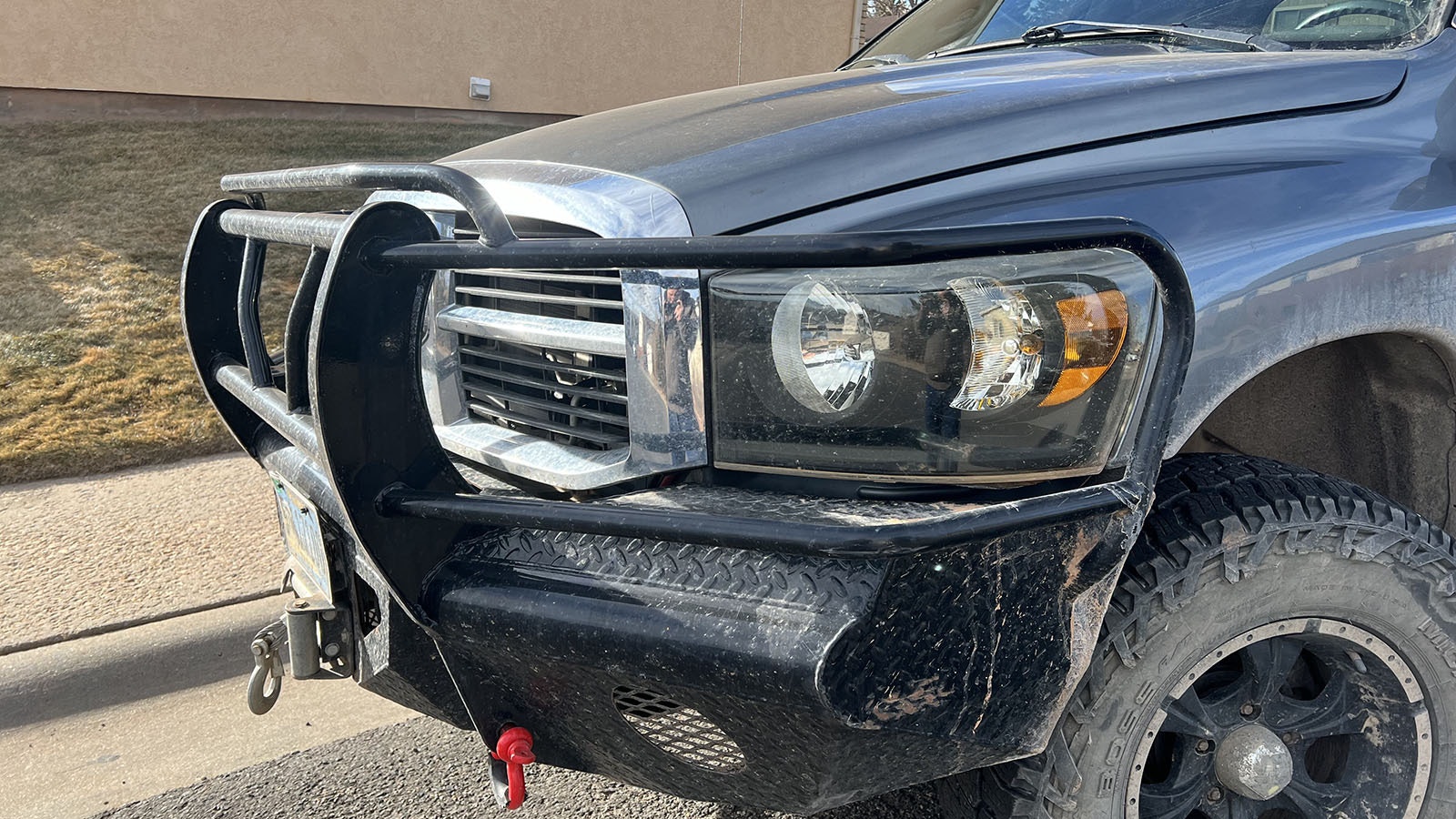Drivers who think that mounting monstrous after-market bumpers — sometimes called “deer-catchers — on their rigs can give them free reign to barrel down Wyoming’s roads and highways with no fear of wildlife jumping in front of them might want to think again.
“It can depend on the size of the animal you hit, and the speed involved. Physics are physics, so, metal will bend,” automotive writer Aaron Turpen told Cowboy State Daily.
Really, the best thing is to just avoid critter collisions to begin with, said Turpen, who is a former big rig driver and Cowboy State Daily automotive columnist.
“Everything you do on the road comes down to how fast you can stop,” he said. “That’s the first thing they tell you when you go to trucking school, and it’s the last thing they tell you when you walk out the door.”
What’s more, any aftermarket alterations probably won’t match the safety engineering that’s already gone into newer vehicles. And they can affect a vehicle’s warranty, or even the driver’s liability in case of an accident, automotive journalist Vince Bodiford told Cowboy State Daily.
“You couldn’t pay me enough to take the factory bumper off a new pickup and put an after-market bumper on it,” said Bodiford, who runs theweekenddrive.com, an online automotive magazine based in Cheyenne and Detroit.
Must Go Up To The Hood
A big aftermarket bumper can mitigate some of the effects of a wildlife collision, but only if it’s designed well and properly made and mounted to the vehicle, Turpen said.
“It’s like most other things, don’t go cheap,” because a cheap or poorly designed aftermarket bumper might crumple and just cause more damage to the vehicle, he said.
“Don’t buy it off your neighbor Jim who made it with his Harbor Freight welder,” he said, adding that simple “push bars, like I frequently see on some SUVs” aren’t adequate.
“It has to wrap all the way around and cover the headlights, and it should come up at least to the top of the hood, if not even a little higher,” he said.
The height is important, because when big critters get smacked they tend to go up and onto vehicles’ hoods and windshields.
“When you start messing up bumpers and hoods, that’s where the money starts to roll,” he said.
Many newer pickup hoods are made of aluminum, which can’t be bent back into shape, so they must be replaced, frequently at a cost of thousands of dollars, Turpen said.
Vehicles are increasingly designed to be essentially modular, meaning that damaged auto body parts will be replaced rather than the vehicle being deemed “totaled” by insurance adjusters.
“I have a neighbor that had massive hailstorm damage to the roof of their Toyota Highlander. The insurance company decided to have their roof cut off and replaced rather than total the vehicle,” he said.
Also, original bumper design is frequently better at absorbing a wildlife collision than aftermarket add-ons, Turpen said.
“When I drove over the road in a big truck, but I didn’t have any additional protection on the front that truck at all, and I hit a deer and all it did was bend the bumper a little bit and leave some hair in the grille,” he said.
You Could Be Liable
It’s true that factory bumpers on newer vehicles can yield a better outcome for those drivers unfortunate enough to hit wildlife, Bodiford said.
“If I were to be in a vehicle and have a collision with a large animal, I would hat it to have the factory bumper on it,” he said.
Auto manufacturers have poured millions of dollars and countless hours into research and development, he said. Modern bumpers are designed to push something the vehicle hits out and away from the vehicle, rather than having it go under the rig or up over the hood and into the windshield, he said.
That was done with pedestrian safety in mind, but the same physics should apply to large animals that get hit, Bodiford said.
Accident liability related to property damage and human injury is another thing to consider when contemplating replacing a bumper with aftermarket heavy metal.
“There’s a lot more to modern bumpers than meets the eye,” Bodiford said.
They can include such things as collision alert sensors, and removing those can cause a vehicle to be deemed less safe. That in turn can increase a driver’s liability in any accident that involves other humans.
If investigators determine that an aftermarket bumper increased vehicle or property damage, or the severity of human injuries in a wreck, the driver could face increase liability, Bodiford said.
An aftermarket bumper “might look cool, but I think the money in my bank account looks cooler,” he said.
Consider The Options
While he’s “skeptical” that huge deer-catcher-style bumpers can increase people’s safety in wildlife collisions, drivers might have other reasons for installing them, Bodiford said.
For instance, off-road enthusiasts can use them to mount accessories, such as winches. And a properly designed aftermarket bumper can increase a four-wheel drive’s front-end clearance.
So, it’s important to consider the pros and cons of putting a huge bumper, or any aftermarket parts, on a rig, he said.
Turpen agreed that drivers should weigh their options carefully and never think of a huge wrap-around bumper as a magic bullet for safely getting through a wildlife collision.
“Even railroad trains with big cow pushers mounted on the front of them can still get derailed by hitting a cow,” he said.
Mark Heinz can be reached at mark@cowboystatedaily.com.





